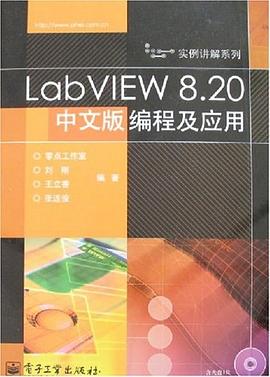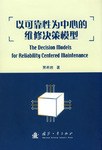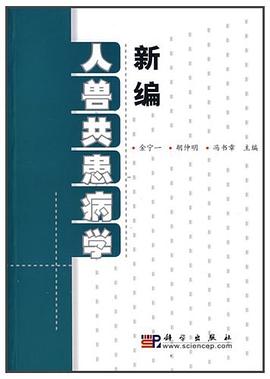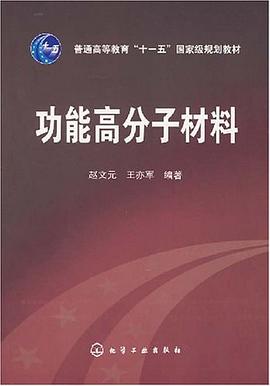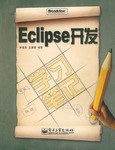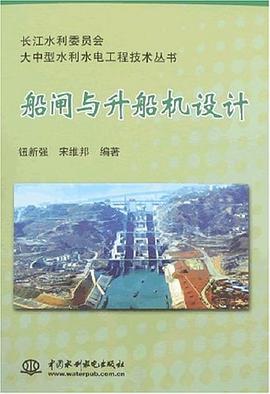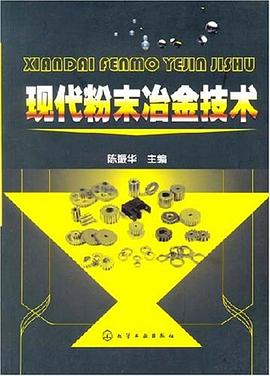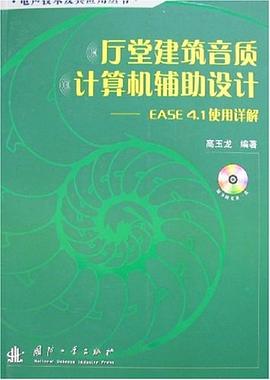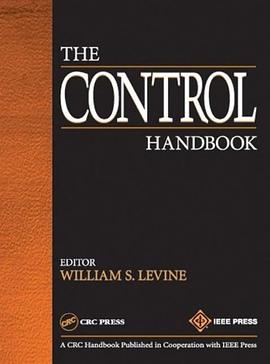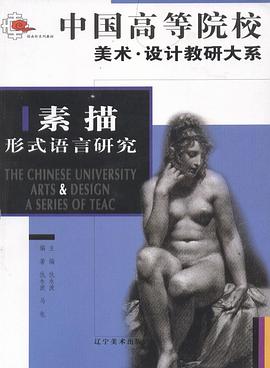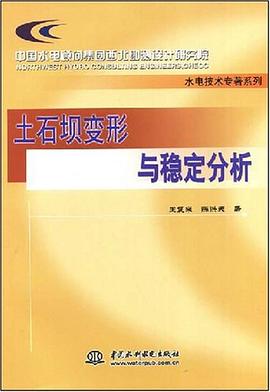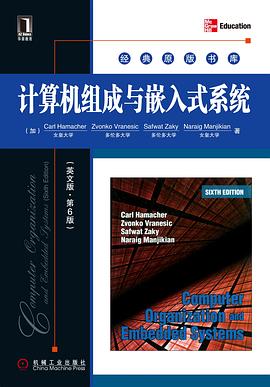

具體描述
本書是一本經典的計算機組成教材,自1978年問世以來,已被多所世界知名大學選為教材。本書知識結構閤理,知識點全麵完整,基本概念廣泛而新穎。書中不僅介紹瞭硬件設計的原理,說明瞭硬件設計如何受軟件需求影響,而且以流行的商用處理器作為範例,描述瞭各種基本知識和基本概念的應用方法和應用過程,具有很強的實用性。此外,本書還涵蓋瞭當今許多先進的技術和設計思想。
本書特色
係統地介紹瞭現代計算機硬件係統的各個組成部分,包括處理器、輸入/輸齣、存儲器和互連標準等。
以Nios II、ARM、ColdFire和Intel IA-32等商用處理器為例來闡釋基本概念,側重於討論RISC設計風格的處理器(如MIPS),同時也介紹瞭CISC設計風格的處理器(如應用比較廣泛的商用處理器Intel IA-32)。
著者簡介
Carl Hamacher 女皇大學電子工程與計算機係榮譽退休教授,曾擔任女皇大學應用科學係主任,多倫多大學電子工程及計算機科學係教授、計算機係統研究所所長、工程科學部主席。他的研究興趣是多處理器和多計算機,側重於網絡互連。
Zvonko Vranesic 多倫多大學電氣與計算機工程係榮譽退休教授,曾參與Altera公司多倫多技術中心的研究和開發工作。他代錶加拿大參加過多次國際象棋比賽,擁有國際象棋大師的頭銜。他的研究興趣是計算機體係結構、現場可編程超大規模集成電路技術和多值邏輯係統。
Safwat Zaky 多倫多大學電氣與計算機工程係榮譽退休教授,並且曾擔任該係係主任。他的研究興趣是計算機體係結構、數字電路設計和電磁兼容性。
Naraig Manjikian 女皇大學電子工程與計算機係副教授,他的研究興趣是計算機體係結構、多處理器係統、現場可編程超大規模集成電路技術和並行處理技術應用。
圖書目錄
Basic Structure of
Computers 1
1.1 Computer Types 2
1.2 Functional Units 3
1.2.1 Input Unit 4
1.2.2 Memory Unit 4
1.2.3 Arithmetic and Logic Unit 5
1.2.4 Output Unit 6
1.2.5 Control Unit 6
1.3 Basic Operational Concepts 7
1.4 Number Representation and Arithmetic Operations 9
1.4.1 Integers 10
1.4.2 Floating-Point Numbers 16
1.5 Character Representation 17
1.6 Performance 17
1.6.1 Technology 17
1.6.2 Parallelism 19
1.7 Historical Perspective 19
1.7.1 The First Generation 20
1.7.2 The Second Generation 20
1.7.3 The Third Generation 21
1.7.4 The Fourth Generation 21
1.8 Concluding Remarks 22
1.9 Solved Problems 22
Problems 24
References 25
C h a p t e r 2
Instruction Set
Architecture 27
2.1 Memory Locations and Addresses 28
2.1.1 Byte Addressability 30
2.1.2 Big-Endian and Little-Endian Assignments 30
2.1.3 Word Alignment 31
2.1.4 Accessing Numbers and Characters 32
2.2 Memory Operations 32
2.3 Instructions and Instruction Sequencing 32
2.3.1 Register Transfer Notation 33
2.3.2 Assembly-Language Notation 33
2.3.3 RISC and CISC Instruction Sets 34
2.3.4 Introduction to RISC Instruction Sets 34
2.3.5 Instruction Execution and Straight-Line Sequencing 36
2.3.6 Branching 37
2.3.7 Generating Memory Addresses 40
2.4 Addressing Modes 40
2.4.1 Implementation of Variables and
Constants 41
2.4.2 Indirection and Pointers 42
2.4.3 Indexing and Arrays 45
2.5 Assembly Language 48
2.5.1 Assembler Directives 50
2.5.2 Assembly and Execution of Programs 53
2.5.3 Number Notation 54
2.6 Stacks 55
2.7 Subroutines 56
2.7.1 Subroutine Nesting and the Processor Stack 58
2.7.2 Parameter Passing 59
2.7.3 The Stack Frame 63
2.8 Additional Instructions 65
2.8.1 Logic Instructions 67
2.8.2 Shift and Rotate Instructions 68
2.8.3 Multiplication and Division 71
2.9 Dealing with 32-Bit Immediate Values 73
2.10 CISC Instruction Sets 74
2.10.1 Additional Addressing Modes 75
2.10.2 Condition Codes 77
2.11 RISC and CISC Styles 78
2.12 Example Programs 79
2.12.1 Vector Dot Product Program 79
2.12.2 String Search Program 81
2.13 Encoding of Machine Instructions 82
2.14 Concluding Remarks 85
2.15 Solved Problems 85
Problems 90
December 16, 2010 09:28 ham_338065_toc Sheet number 2 Page number xvi cyan black
Contents
C h a p t e r 3
Basic Input/Output 95
3.1 Accessing I/O Devices 96
3.1.1 I/O Device Interface 97
3.1.2 Program-Controlled I/O 97
3.1.3 An Example of a RISC-Style I/O Program 101
3.1.4 An Example of a CISC-Style I/O Program 101
3.2 Interrupts 103
3.2.1 Enabling and Disabling Interrupts 106
3.2.2 Handling Multiple Devices 107
3.2.3 Controlling I/O Device Behavior 109
3.2.4 Processor Control Registers 110
3.2.5 Examples of Interrupt Programs 111
3.2.6 Exceptions 116
3.3 Concluding Remarks 119
3.4 Solved Problems 119
Problems 126
C h a p t e r 4
Software 129
4.1 The Assembly Process 130
4.1.1 Two-pass Assembler 131
4.2 Loading and Executing Object Programs 131
4.3 The Linker 132
4.4 Libraries 133
4.5 The Compiler 133
4.5.1 Compiler Optimizations 134
4.5.2 Combining ProgramsWritten in Different Languages 134
4.6 The Debugger 134
4.7 Using a High-level Language for I/O Tasks 137
4.8 Interaction between Assembly Language and C Language 139
4.9 The Operating System 143
4.9.1 The Boot-strapping Process 144
4.9.2 Managing the Execution of Application Programs 144
4.9.3 Use of Interrupts in Operating Systems 146
4.10 Concluding Remarks 149
Problems 149
References 150
C h a p t e r 5
Basic Processing Unit 151
5.1 Some Fundamental Concepts 152
5.2 Instruction Execution 155
5.2.1 Load Instructions 155
5.2.2 Arithmetic and Logic Instructions 156
5.2.3 Store Instructions 157
5.3 Hardware Components 158
5.3.1 Register File 158
5.3.2 ALU 160
5.3.3 Datapath 161
5.3.4 Instruction Fetch Section 164
5.4 Instruction Fetch and Execution Steps 165
5.4.1 Branching 168
5.4.2 Waiting for Memory 171
5.5 Control Signals 172
5.6 Hardwired Control 175
5.6.1 Datapath Control Signals 177
5.6.2 Dealing with Memory Delay 177
5.7 CISC-Style Processors 178
5.7.1 An Interconnect using Buses 180
5.7.2 Microprogrammed Control 183
5.8 Concluding Remarks 185
5.9 Solved Problems 185
Problems 188
C h a p t e r 6
Pipelining 193
6.1 Basic Concept—The Ideal Case 194
6.2 Pipeline Organization 195
6.3 Pipelining Issues 196
6.4 Data Dependencies 197
6.4.1 Operand Forwarding 198
6.4.2 Handling Data Dependencies in Software 199
6.5 Memory Delays 201
6.6 Branch Delays 202
6.6.1 Unconditional Branches 202
6.6.2 Conditional Branches 204
6.6.3 The Branch Delay Slot 204
6.6.4 Branch Prediction 205
6.7 Resource Limitations 209
6.8 Performance Evaluation 209
6.8.1 Effects of Stalls and Penalties 210
6.8.2 Number of Pipeline Stages 212
xiii
December 16, 2010 09:28 ham_338065_toc Sheet number 3 Page number xvii cyan black
Contents
6.9 Superscalar Operation 212
6.9.1 Branches and Data Dependencies 214
6.9.2 Out-of-Order Execution 215
6.9.3 Execution Completion 216
6.9.4 Dispatch Operation 217
6.10 Pipelining in CISC Processors 218
6.10.1 Pipelining in ColdFire Processors 219
6.10.2 Pipelining in Intel Processors 219
6.11 Concluding Remarks 220
6.12 Examples of Solved Problems 220
Problems 222
References 226
C h a p t e r 7
Input/Output Organization 227
7.1 Bus Structure 228
7.2 Bus Operation 229
7.2.1 Synchronous Bus 230
7.2.2 Asynchronous Bus 233
7.2.3 Electrical Considerations 236
7.3 Arbitration 237
7.4 Interface Circuits 238
7.4.1 Parallel Interface 239
7.4.2 Serial Interface 243
7.5 Interconnection Standards 247
7.5.1 Universal Serial Bus (USB) 247
7.5.2 FireWire 251
7.5.3 PCI Bus 252
7.5.4 SCSI Bus 256
7.5.5 SATA 258
7.5.6 SAS 258
7.5.7 PCI Express 258
7.6 Concluding Remarks 260
7.7 Solved Problems 260
Problems 263
References 266
C h a p t e r 8
The Memory System 267
8.1 Basic Concepts 268
8.2 Semiconductor RAM Memories 270
8.2.1 Internal Organization of Memory Chips 270
8.2.2 Static Memories 271
8.2.3 Dynamic RAMs 274
8.2.4 Synchronous DRAMs 276
8.2.5 Structure of Larger Memories 279
8.3 Read-only Memories 282
8.3.1 ROM 283
8.3.2 PROM 283
8.3.3 EPROM 284
8.3.4 EEPROM 284
8.3.5 Flash Memory 284
8.4 Direct Memory Access 285
8.5 Memory Hierarchy 288
8.6 Cache Memories 289
8.6.1 Mapping Functions 291
8.6.2 Replacement Algorithms 296
8.6.3 Examples of Mapping Techniques 297
8.7 Performance Considerations 300
8.7.1 Hit Rate and Miss Penalty 301
8.7.2 Caches on the Processor Chip 302
8.7.3 Other Enhancements 303
8.8 Virtual Memory 305
8.8.1 Address Translation 306
8.9 Memory Management Requirements 310
8.10 Secondary Storage 311
8.10.1 Magnetic Hard Disks 311
8.10.2 Optical Disks 317
8.10.3 Magnetic Tape Systems 322
8.11 Concluding Remarks 323
8.12 Solved Problems 324
Problems 328
References 332
C h a p t e r 9
Arithmetic 335
9.1 Addition and Subtraction of Signed Numbers 336
9.1.1 Addition/Subtraction Logic Unit 336
9.2 Design of Fast Adders 339
9.2.1 Carry-Lookahead Addition 340
9.3 Multiplication of Unsigned Numbers 344
9.3.1 Array Multiplier 344
9.3.2 Sequential Circuit Multiplier 346
9.4 Multiplication of Signed Numbers 346
9.4.1 The Booth Algorithm 348
9.5 Fast Multiplication 351
9.5.1 Bit-Pair Recoding of Multipliers 352
9.5.2 Carry-Save Addition of Summands 353
xiv
December 16, 2010 09:28 ham_338065_toc Sheet number 4 Page number xviii cyan black
9.5.3 Summand Addition Tree using 3-2 Reducers 355
9.5.4 Summand Addition Tree using 4-2 Reducers 357
9.5.5 Summary of Fast Multiplication 359
9.6 Integer Division 360
9.7 Floating-Point Numbers and Operations 363
9.7.1 Arithmetic Operations on Floating-Point Numbers 367
9.7.2 Guard Bits and Truncation 368
9.7.3 Implementing Floating-Point Operations 369
9.8 Decimal-to-Binary Conversion 372
9.9 Concluding Remarks 372
9.10 Solved Problems 374
Problems 377
References 383
C h a p t e r 10
Embedded Systems 385
10.1 Examples of Embedded Systems 386
10.1.1 Microwave Oven 386
10.1.2 Digital Camera 387
10.1.3 Home Telemetry 390
10.2 Microcontroller Chips for Embedded Applications 390
10.3 A Simple Microcontroller 392
10.3.1 Parallel I/O Interface 392
10.3.2 Serial I/O Interface 395
10.3.3 Counter/Timer 397
10.3.4 Interrupt-Control Mechanism 399
10.3.5 Programming Examples 399
10.4 Reaction Timer—AComplete Example 401
10.5 Sensors and Actuators 407
10.5.1 Sensors 407
10.5.2 Actuators 410
10.5.3 Application Examples 411
10.6 Microcontroller Families 412
10.6.1 Microcontrollers Based on the Intel 8051 413
10.6.2 Freescale Microcontrollers 413
10.6.3 ARM Microcontrollers 414
10.7 Design Issues 414
10.8 Concluding Remarks 417
Problems 418
References 420
C h a p t e r 11
System-on-a-Chip—A Case Study 421
11.1 FPGA Implementation 422
11.1.1 FPGA Devices 423
11.1.2 Processor Choice 423
11.2 Computer-Aided Design Tools 424
11.2.1 Altera CAD Tools 425
11.3 Alarm Clock Example 428
11.3.1 User’s View of the System 428
11.3.2 System Definition and Generation 429
11.3.3 Circuit Implementation 430
11.3.4 Application Software 431
11.4 Concluding Remarks 440
Problems 440
References 441
C h a p t e r 12
Parallel Processing and Performance 443
12.1 Hardware Multithreading 444
12.2 Vector (SIMD) Processing 445
12.2.1 Graphics Processing Units (GPUs) 448
12.3 Shared-Memory Multiprocessors 448
12.3.1 Interconnection Networks 450
12.4 Cache Coherence 453
12.4.1 Write-Through Protocol 453
12.4.2 Write-Back protocol 454
12.4.3 Snoopy Caches 454
12.4.4 Directory-Based Cache Coherence 456
12.5 Message-Passing Multicomputers 456
12.6 Parallel Programming for Multiprocessors 456
12.7 Performance Modeling 460
12.8 Concluding Remarks 461
Problems 462
References 463
A p p e n d i x A
Logic Circuits 465
A.1 Basic Logic Functions
A.1.1 Electronic Logic Gates 469
A.2 Synthesis of Logic Functions 470
Contents xv
December 16, 2010 09:28 ham_338065_toc Sheet number 5 Page number xix cyan black
A.3 Minimization of Logic Expressions 472
A.3.1 Minimization using Karnaugh Maps 475
A.3.2 Don’t-Care Conditions 477
A.4 Synthesis with NAND and NOR Gates 479
A.5 Practical Implementation of Logic Gates 482
A.5.1 CMOS Circuits 484
A.5.2 Propagation Delay 489
A.5.3 Fan-In and Fan-Out Constraints 490
A.5.4 Tri-State Buffers 491
A.6 Flip-Flops 492
A.6.1 Gated Latches 493
A.6.2 Master-Slave Flip-Flop 495
A.6.3 Edge Triggering 498
A.6.4 T Flip-Flop 498
A.6.5 JK Flip-Flop 499
A.6.6 Flip-Flops with Preset and Clear 501
A.7 Registers and Shift Registers 502
A.8 Counters 503
A.9 Decoders 505
A.10 Multiplexers 506
A.11 Programmable Logic Devices (PLDs) 509
A.11.1 Programmable Logic Array (PLA) 509
A.11.2 Programmable Array Logic (PAL) 511
A.11.3 Complex Programmable Logic Devices (CPLDs) 512
A.12 Field-Programmable Gate Arrays 514
A.13 Sequential Circuits 516
A.13.1 Design of an Up/Down Counter as a Sequential Circuit 516
A.13.2 Timing Diagrams 519
A.13.3 The Finite State Machine Model 520
A.13.4 Synthesis of Finite State Machines 521
A.14 Concluding Remarks 522
Problems 522
References 528
A p p e n d i x B
The Altera Nios II
Processor 529
B.1 Nios II Characteristics 530
B.2 General-Purpose Registers 531
B.3 Addressing Modes 532
B.4 Instructions 533
B.4.1 Notation 533
B.4.2 Load and Store Instructions 534
B.4.3 Arithmetic Instructions 536
B.4.4 Logic Instructions 537
B.4.5 Move Instructions 537
B.4.6 Branch and Jump Instructions 538
B.4.7 Subroutine Linkage Instructions 541
B.4.8 Comparison Instructions 545
B.4.9 Shift Instructions 546
B.4.10 Rotate Instructions 547
B.4.11 Control Instructions 548
B.5 Pseudoinstructions 548
B.6 Assembler Directives 549
B.7 Carry and Overflow Detection 551
B.8 Example Programs 553
B.9 Control Registers 553
B.10 Input/Output 555
B.10.1 Program-Controlled I/O 556
B.10.2 Interrupts and Exceptions 556
B.11 Advanced Configurations of Nios II Processor 562
B.11.1 External Interrupt Controller 562
B.11.2 Memory Management Unit 562
B.11.3 Floating-Point Hardware 562
B.12 Concluding Remarks 563
B.13 Solved Problems 563
Problems 568
A p p e n d i x C
The ColdFire Processor 571
C.1 Memory Organization 572
C.2 Registers 572
C.3 Instructions 573
C.3.1 Addressing Modes 575
C.3.2 Move Instruction 577
C.3.3 Arithmetic Instructions 578
C.3.4 Branch and Jump Instructions 582
C.3.5 Logic Instructions 585
C.3.6 Shift Instructions 586
C.3.7 Subroutine Linkage Instructions 587
C.4 Assembler Directives 593
C.5 Example Programs 594
C.5.1 Vector Dot Product Program 594
C.5.2 String Search Program 595
C.6 Mode of Operation and Other Control Features 596
C.7 Input/Output 597
C.8 Floating-Point Operations 599
C.8.1 FMOVE Instruction 599
xvi Contents
December 16, 2010 09:28 ham_338065_toc Sheet number 6 Page number xx cyan black
C.8.2 Floating-Point Arithmetic Instructions 600
C.8.3 Comparison and Branch Instuctions 601
C.8.4 Additional Floating-Point Instructions 601
C.8.5 Example Floating-Point Program 602
C.9 Concluding Remarks 603
C.10 Solved Problems 603
Problems 608
References 609
A p p e n d i x D
The ARM Processor 611
D.1 ARM Characteristics 612
D.1.1 Unusual Aspects of the ARM Architecture 612
D.2 Register Structure 613
D.3 Addressing Modes 614
D.3.1 Basic Indexed Addressing Mode 614
D.3.2 Relative Addressing Mode 615
D.3.3 Index Modes withWriteback 616
D.3.4 Offset Determination 616
D.3.5 Register, Immediate, and Absolute Addressing Modes 618
D.3.6 Addressing Mode Examples 618
D.4 Instructions 621
D.4.1 Load and Store Instructions 621
D.4.2 Arithmetic Instructions 622
D.4.3 Move Instructions 625
D.4.4 Logic and Test Instructions 626
D.4.5 Compare Instructions 627
D.4.6 Setting Condition Code Flags 628
D.4.7 Branch Instructions 628
D.4.8 Subroutine Linkage Instructions 631
D.5 Assembly Language 635
D.5.1 Pseudoinstructions 637
D.6 Example Programs 638
D.6.1 Vector Dot Product 639
D.6.2 String Search 639
D.7 Operating Modes and Exceptions 639
D.7.1 Banked Registers 641
D.7.2 Exception Types 642
D.7.3 System Mode 644
D.7.4 Handling Exceptions 644
D.8 Input/Output 646
D.8.1 Program-Controlled I/O 646
D.8.2 Interrupt-Driven I/O 648
D.9 Conditional Execution of Instructions 648
D.10 Coprocessors 650
D.11 Embedded Applications and the Thumb ISA 651
D.12 Concluding Remarks 651
D.13 Solved Problems 652
Problems 657
References 660
A p p e n d i x E
The Intel IA-32 Architecture
661
E.1 Memory Organization 662
E.2 Register Structure 662
E.3 Addressing Modes 665
E.4 Instructions 668
E.4.1 Machine Instruction Format 670
E.4.2 Assembly-Language Notation 670
E.4.3 Move Instruction 671
E.4.4 Load-Effective-Address Instruction 671
E.4.5 Arithmetic Instructions 672
E.4.6 Jump and Loop Instructions 674
E.4.7 Logic Instructions 677
E.4.8 Shift and Rotate Instructions 678
E.4.9 Subroutine Linkage Instructions 679
E.4.10 Operations on Large Numbers 681
E.5 Assembler Directives 685
E.6 Example Programs 686
E.6.1 Vector Dot Product Program 686
E.6.2 String Search Program 686
E.7 Interrupts and Exceptions 687
E.8 Input/Output Examples 689
E.9 Scalar Floating-Point Operations 690
E.9.1 Load and Store Instructions 692
E.9.2 Arithmetic Instructions 693
E.9.3 Comparison Instructions 694
E.9.4 Additional Instructions 694
E.9.5 Example Floating-Point Program 694
E.10 Multimedia Extension (MMX) Operations 695
E.11 Vector (SIMD) Floating-Point Operations 696
E.12 Examples of Solved Problems 697
E.13 Concluding Remarks 702
Problems 702
References 703
· · · · · · (收起)
讀後感
評分
評分
評分
評分
用戶評價
再次被學校教材坑瞭一波
评分再次被學校教材坑瞭一波
评分再次被學校教材坑瞭一波
评分再次被學校教材坑瞭一波
评分再次被學校教材坑瞭一波
相關圖書
本站所有內容均為互聯網搜索引擎提供的公開搜索信息,本站不存儲任何數據與內容,任何內容與數據均與本站無關,如有需要請聯繫相關搜索引擎包括但不限於百度,google,bing,sogou 等
© 2025 book.quotespace.org All Rights Reserved. 小美書屋 版权所有



